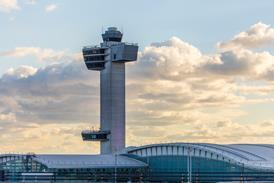Efforts to improve helicopter safety appear to have stalled - in the USA at least. Can new research signal a way forward?
If US National Transportation Safety Board (NTSB) helicopter accident statistics for the past 10 years are taken as the most powerful single indicator of helicopter safety, nothing much changes. There are better years and worse years, but no discernible trend, begging the question as to whether the industry has - in the USA at least - plateaued.
US statistics contrast with Australian Transport Safety Board figures that indicate helicopter accidents there followed a downward trend throughout the 1990s, roughly halving in number. The reported incident numbers were flat - there was no trend up or down - but at least a smaller proportion of them appeared to be crossing the line into the accident category. Canada reports a gentle reduction in the number of helicopter accidents over the past 10 years, but nobody matches the US NTSB helicopter data analysis for rigour, so direct comparisons of accident rates is not possible.
In the fixed-wing world, both for airlines and in general aviation, there has been a noticeable improvement in safety. Part of that improvement has been attributed, particularly in the airlines, to more modern, more reliable equipment and smarter onboard systems. But more modern equipment entering the helicopter fleet does not appear to be having the same effect on overall safety statistics.
In the UK, the Civil Aviation Authority seems to have taken the attitude that research into phenomena that have troubled the industry for years may be the only way to push helicopter safety forward. The CAA has dramatically improved safety levels in the demanding North Sea offshore oil support operations - at which much of its heavyweight research was aimed - over the past 15 years. Yet when the CAA's fatal accident statistics and reportable accidents for all public and non-public transport helicopters are examined, they show no real trend either.
One of the two most recent research programmes is the CAA's Helicopter Operations Monitoring Programme (HOMP), a system of studies and airborne trials with the objective of enabling the rotary-wing world to benefit from its own version of the fixed-wing flight operations monitoring (FOM) system, also known in the USA as flight operations quality assurance (FOQA). CAA HOMP trials with international operator Bristow Helicopters have now been expanded to include one of the other big operators, CHC Europe. The latter also operates in North Sea oil support and search and rescue from four countries, and the combination of new data from CHC and additional information from the continuing Bristow FOM usage throughout its fleet has presented the CAA and its researchers with a tool for measuring, among many other things, the effects of turbulence on helicopters and the way crews fly them in rough conditions.
Measuring turbulence
Turbulence was considered to be just an unavoidable fact of life for all aviators. It will still remain unavoidable, but the HOMP trial combined with a specific research programme sponsored by the CAA have proved that turbulence is a measurable phenomenon whose effects on helicopter operations can be quantified, predicted and managed. Turbulence around offshore oil platforms has been ranked by helicopter pilots as being the greatest safety hazard and workload producer among conditions they regularly face in the performance of their job. If pilots who operate among mountains were similarly surveyed, they would probably give a similar response.
There are indications that unanticipated yaw seems to be one of the most-feared safety-threatening phenomena, even if they are not derived from a scientific study like the CAA's research programmes. The Helicopter Association International website has pages of operations/crew room safety posters, and it is revealing to check which ones get the most hits and which the fewest. Many visitors appear not to have noticed that there is more than one page of options. But on the first page, most hits go to the poster providing information on how to guard against "unanticipated yaw" - loss of or reduction in tail rotor effectiveness.
Website hitlist
That is also the top scorer among all the poster designs, no matter which page they are on. Second in the hitlist is techniques for autorotation and how to survive training in that awkward exercise. The fewest hits on the front page is for the poster that announces "Accidents are bad for business". However true the latter may be, the truth that the pilot who saves his/her own life will save those of the passengers appears to rule the day.
High scores on subsequent pages go to posters encouraging pilots to keep their aircraft and themselves within their respective operating limitations, obstacle avoidance close to the ground, and passenger and staff safety on the ramp.
DAVID LEARMOUNT / LONDON

Source: Flight International























